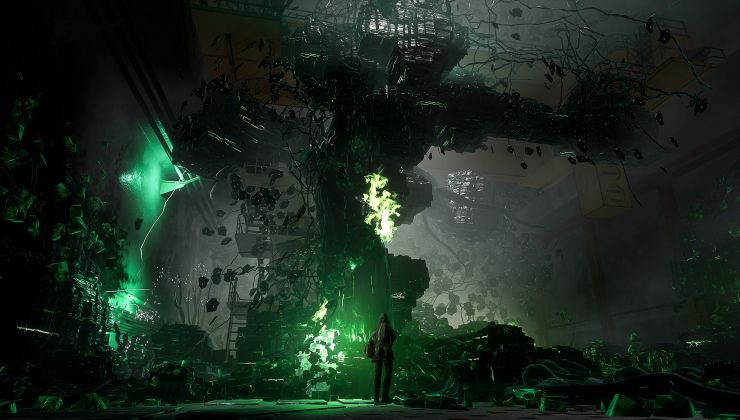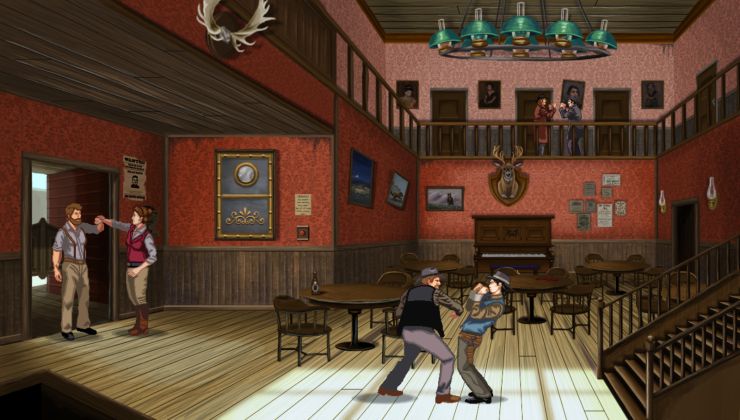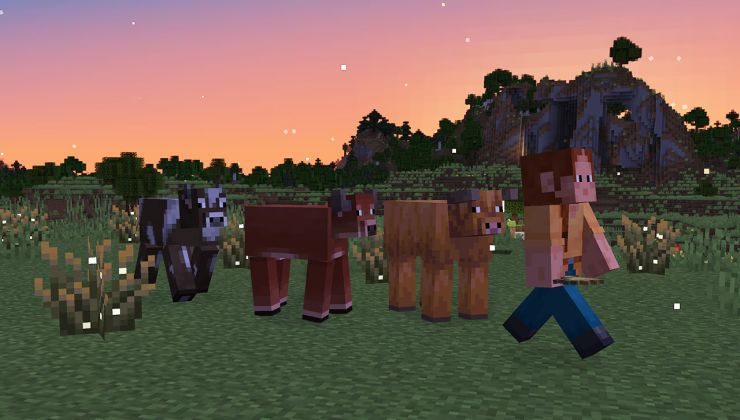Great news for AMD fans as Quake II RTX has been updated again, and it now features support for the newly released official cross-vendor Ray Tracing support with the Vulkan API.
With Vulkan, originally only NVIDIA supported Ray Tracing with their own extensions. That's no longer needed, as The Khronos Group formally announced the final and finished Ray Tracing specification for the Vulkan API back in late November.
Quake II RTX was one of the earliest titles to have Ray Tracing, and acted as something of a quick playground just to test out the features available. It was built on top of existing work from Q2VKPT from Christoph Schied with NVIDIA adding in new path-traced visual effects, improved textures and so on.

 Pictured - shots taken from Quake II RTX on Linux with Ray Tracing on.
Pictured - shots taken from Quake II RTX on Linux with Ray Tracing on.
Thanks to an update to Quake II RTX released today, it adds support for the new official Vulkan Ray Tracing API and enables dynamic selection between NVIDIA's stuff and the new stuff. Any GPU and driver that supports VK_KHR_ray_tracing_pipeline will now work with the Ray Tracing here. Additionally, they also added in "temporal upscaling, or TAAU".
Quake II RTX 1.4.0 comes with various other improvements too including SDL2 upgrades, lots of bug fixes, further enhancements to the visuals like more stable reflections and refractions, reduced blurring in the temporal filter and more.
Find Quake II RTX on Steam with the first three levels free, the rest available if you buy Quake 2 directly. The source code to it can be found on GitHub if you wish to learn from it.
No, raytracing is overlaid on top of some other traditional techniques still. It does completely replace the lighting pass for example, but not all of the shadow passes.
It is all raytraced. Even the shadows.
That question of performance is also crucial. It's not something that can be ignored, because it directly impacts the code written.
That... doesn't make any sense. The performance issue is important, which is why you're only getting playable performance at 1080p on a game with relatively low scene complexity (given that it's 20 years old), and you're limited to ~10 rays per pixel so you need to use a denoiser. But an entirely raytraced game at "high definition" resolution at 60 fps exists, and has existed for two years.
I mean, I'm only going by the talk of the nvidia engineer who was the primary guy behind the port. Obviously you know better, my mistake then.
More than you, it seems. You seem to have misinterpreted the video that you watched.
You could play it yourself, and look at the code, or just go by something like "[Q2VKPT](http://brechpunkt.de/q2vkpt/) is the first playable game that is entirely raytraced and efficiently simulates fully dynamic lighting in real-time, with the same modern techniques as used in the movie industry" and read the copious documentation and papers that Nvidia have put out about the renderer and how it works.
I mean, I could. But I won't.
You could certainly try.
Getting bored by this now - carry on if you wish, but I'm stopping here.
Bye.
For the benefit of everyone else, let's assume that mirv is correct, and the game rasterises some static shadows for some reason, even though the authors say they don't, and even though they show how they generate shadow rays in their videos and extensive documentation, and shadow rays are just some more ray calculations when you've already set up your BVHs and found your intersection points, and so on; taking the position that those shadows are the important bit and everything else is just "some effects" would be... pretty silly.
Last edited by CatKiller on 16 Dec 2020 at 3:39 pm UTC
But yeah doing full raytraced scenes back on the Atari Mega STe would take several days. Good ol' povray!
Not seeing VK_KHR_ray_tracing_pipeline extension on my Vega 56. And unsurprisingly it doesn't start.
Don't know why you would think it would, since the Vega 56 doesn't support Ray Tracing.
Because I remembered reading something like this: https://www.notebookcheck.net/Not-just-RTX-even-the-Vega-56-can-do-ray-tracing-at-1080p-30-fps.420357.0.htmlNot seeing VK_KHR_ray_tracing_pipeline extension on my Vega 56. And unsurprisingly it doesn't start.Don't know why you would think it would, since the Vega 56 doesn't support Ray Tracing.
Because I remembered reading something like this: https://www.notebookcheck.net/Not-just-RTX-even-the-Vega-56-can-do-ray-tracing-at-1080p-30-fps.420357.0.htmlNot seeing VK_KHR_ray_tracing_pipeline extension on my Vega 56. And unsurprisingly it doesn't start.Don't know why you would think it would, since the Vega 56 doesn't support Ray Tracing.
And that's because it was a Crytek demo which was hardware and API agnostic, and not even in the same universe as what's going on here.
So if I have Quake 2 on Steam, then I can play the whole game in Quake II RTX (with RTX enabled etc.)?
"Find Quake II RTX on Steam with the first three levels free, the rest available if you buy Quake 2 directly."I've had Quake 2 on Steam for a long time, there is a trick you have to do for the expansions to work, but they also will work with the RTX version. (Can't recall what the trick actually is, I think you just move the baseq files, or whatever they're called).
So if I have Quake 2 on Steam, then I can play the whole game in Quake II RTX (with RTX enabled etc.)?
(small print: must be ran through streaming from a computer that actually supports RTX)








 How to set, change and reset your SteamOS / Steam Deck desktop sudo password
How to set, change and reset your SteamOS / Steam Deck desktop sudo password How to set up Decky Loader on Steam Deck / SteamOS for easy plugins
How to set up Decky Loader on Steam Deck / SteamOS for easy plugins
See more from me